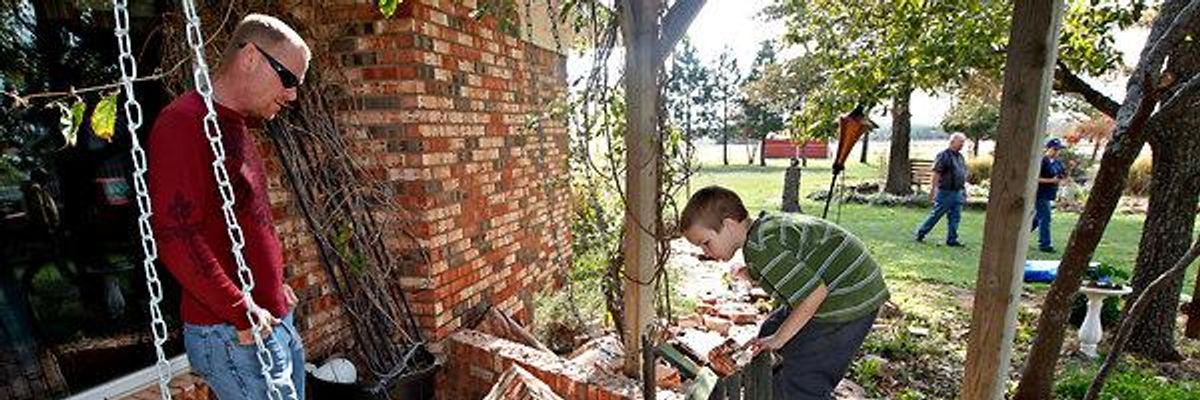Earthquakes in Oklahoma increased by 50 percent in 2015, surpassing the previous year's record and sounding new alarms over the risks of oil and gas operations like hydraulic fracturing, or fracking.
In fact, according to the state public utilities regulator, Oklahoma now officially experiences more earthquakes than anywhere else in the world--likely thanks to its expanding fossil fuel industry and the subsequent swell of wastewater disposal operations that scientists say triggers seismic activity.
U.S. Geological Survey data shows that Oklahoma was hit by 881 earthquakes with a magnitude of 3 or higher, an average of 2.4 per day--up from 585 in 2014.
"For all of us involved, frustration isn't even a word, you feel just as every other resident does, that you're being physically attacked, like you're dealing with a living breathing thing," Matt Skinner, spokesperson for the Oklahoma Corporation Commission (OCC), told a local outlet on Monday.
About 1.5 billion barrels of wastewater from oil and gas sites were disposed of underground in the state last year.
The commission on Monday ordered five disposal wells to reduce their operations after Edmond, an area just north of Oklahoma City, was hit with at least a dozen earthquakes in less than a week.
KFOR reports:
On a large scale level, the Oklahoma Corporation Commission has been responding by ordering companies to well reduce disposal volumes close to epicenters, since March of 2015. What makes this one so different is there are no deep disposal wells close to the Edmond epicenters.
But broken mirrors and cracks in the walls are wake-up calls that earthquakes may be getting closer and closer.
With 3,500 wells functioning throughout the state, the order only applies to a small portion of the operations. However, according to Oil and Gas Conservation Division director Tim Baker, state officials are working with researchers to "plot out where we should go from here."

